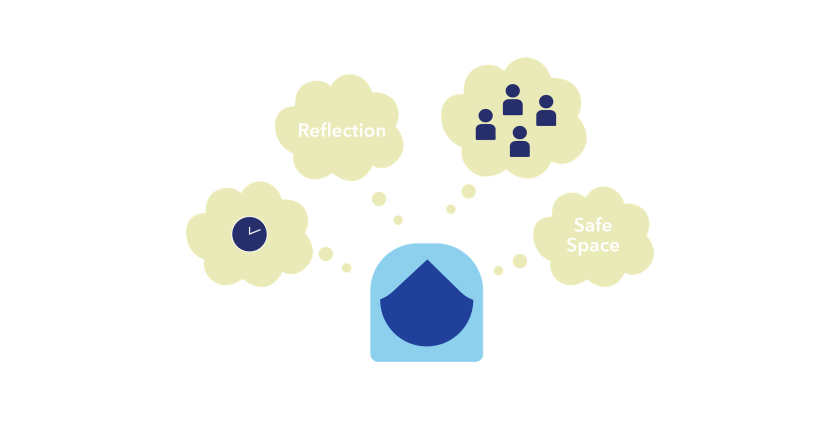Abstract

Experiential educators probably think more about the context, environment, or space of the learning than do other educators. Marshal McLuhan coined the phrase, “The medium is the message,” and it’s also true that the context of the educational experience is the message that students receive. This article helps experiential writing educators be mindful of situational factors that affect the students.
Theoretical Background:
Fink (2003) writes that a good educator must consider situational factors as they begin designing their course: “If you skip over this step or do a superficial job, you increase the chances of ending up with a course that doesn’t work for the students involved, doesn’t meet the needs of the curriculum, doesn’t fit the teacher or otherwise misses the mark” (p. 68).
Basics of Practice
Principles
Fink (2003) urges all educators to consider the specific space (classroom, lab, canyon) in which they’ll work with students, the general institution they work inside (university, organization), the advantages and disadvantages both the specific and general space, the nature of the subject or discipline, the characteristics and learning levels of the students, their own characteristics as leaders and teachers, and the modes of communication. They also consider the experience their students may have already had with the material and the pertinent skills they may have developed as well as new skills the teacher may need to help them develop.
Jennifer Moon(1999), who focuses specifically on developing a culture of reflection with her students, suggest that teachers and leaders consider the time in the curriculum that is available for reflection, the space where students will write when they’re reflecting, the teachers own reflective and counselling abilities, the curriculum the students will be reflecting about, the general support of the organization or university department for reflection, the emotional environment or culture of the students, and other relationships factors--to each other, the teacher, the institution.
How-to
Determine the following:
- What is the connection between reflection and your learning objectives? Or, how will reflection help students master the course objectives?
- What specific kinds of writing, other than reflection, will help your students? (See “Pick Your Genres” in this website.
- How and when will you provide instruction on reflection and reflective writing?
- How and when will students write? This must be a space without distractions.
- How will you integrate discussion and writing? Will the prompt or assignment come before or during discussion?
- How and when will you give instruction on how to give feedback?
- How and when will students share their writing? Will they share in a large group in a circle, or will they be in smaller groups? Will the students share writing out loud, online, or in another manner?
- How will you mentor the students individually?
- How will you structure the prompts and assignments so that they move from more guidance to less guidance?
Teaching Materials and Resources
- Decision-making rubric from Jennifer Moon for considering the educational environment
- Decision-making rubric from L. Dee Fink for considering the educational environment
Quick Links
Bates, T. (2015). What is a learning environment? Teaching in a digital age: Guidelines for designing teaching and learning. BCcampus Open Publishing.
A.2 What is a learning environment?
Educational Environment. Science Direct. https://www.sciencedirect.com/topics/psychology/educational-environment
Hutchinson, L. (2003). Educational environment. BMJ.326(7393): 810–812.
doi: 10.1136/bmj.326.7393.810
https://www.ncbi.nlm.nih.gov/pmc/articles/PMC1125718/
An excellent article about the educational environment that considers both physical situation, motivation of students, and ways of creating a safe educational space.
References
Fink, L. D. (2003). Creating significant learning experiences: An integrated approach to designing college courses. Jossey-Bass.
Moon, J. (1999). Reflection in learning & professional development: Theory & practice. Kogan.
Further Reading
